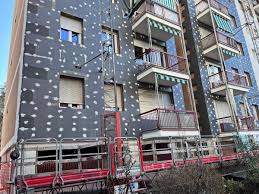The impact of the Superbonus on Italian construction costs

The ‘Superbonus’ – a generous tax credit for certain building renovations – was one of the largest fiscal programmes implemented in Italy after the outbreak of the pandemic. This columns examines the impact of the programme on construction costs. The authors find that the Superbonus played a significant role in the growth of Italian construction costs in the post-pandemic period, suggesting that the policy had redistributive effects not only in favour of homeowners but also in favour of firms in the upstream satellite activities of the construction sector.
Expansionary fiscal policies contributed to the post-pandemic recovery in both the US and the euro area. According to some scholars (Blanchard 2023, Giannone and Primiceri 2024, Jordà and Nechio 2023, Bianchi et al. 2023), these policies also shaped the recent inflationary episode, in addition to the crucial determinants represented by supply chain pressures (Ascari et al. 2024) and energy supply shocks (Alessandri and Gazzani 2023, Neri et al. 2023). In this column, we discuss the effects of the so-called ‘Superbonus’ – one of the largest fiscal programmes implemented in Italy after the outbreak of the pandemic (Kazmin 2023, The Economist 2024) – on input prices in the Italian construction sector (i.e. construction costs), drawing on a recent paper (Corsello and Ercolani 2024).
The Superbonus and Italian construction costs
The Superbonus consists of a generous tax credit (with a rate as high as 110% in some cases) for specific kinds of building renovations, related in particular to energy efficiency and seismic resilience improvements. Until March 2024, in many instances it could not only be used directly by beneficiaries as a discount on their tax liabilities, but also transferred to third parties or exercised as an invoice discount, making it in principle attractive even to individuals with relatively low tax liabilities or low liquidity. The estimated impact in terms of public costs accrued in the net borrowing stood at almost 1%, 3% and 4% of GDP in 2021, 2022, 2023, respectively (for an overall envelope of more than €150 billion). 1
We proxy the incentives for building renovation with the monthly changes of the Superbonus series published by the Italian National Agency for New Technologies, Energy and Sustainable Economic Development (ENEA). This series is available since September 2021 and includes only the incentives related to energy efficiency improvements, which however represent by far the largest share of the total (Figure 1). 2 Construction costs are measured by the Construction Cost Index (CCI), a monthly input price index computed and published by the Italian National Statistical Institute (Istat), which represents the direct costs incurred by firms in the construction of a building for residential use. This variable is composed of four elements (which are not available separately): labour costs, materials costs, hiring and transport charges. Figure 1 shows that the CCI grew by roughly 20% after the pandemic outbreak and by about 13% after September 2021, which is when the ENEA series on the Superbonus starts. The first marked acceleration of the CCI occurred during 2021, when the incentives for building renovation started to be used by the public in relevant amounts. Moreover, the first half of 2022 saw a steep increase both in the CCI and in the Superbonus.
It is worth noting that, despite the implementation of such a large fiscal programme, growth of construction costs was lower in Italy than in other major euro area countries (such as Germany). One reason is that supply shortages were much more severe in other European countries than in Italy. Moreover, the depressed condition of the Italian construction sector during the years before the pandemic could have played a role: if they were operating below capacity at the time the tax incentives for building renovation were introduced, construction firms could have adjusted their output quite rapidly to the increasing demand without, for example, facing significantly higher labour costs. Indeed, labour cost dynamics in the construction sector were relatively flat in Italy over the period under scrutiny, unlike in the other major euro area countries (see Corsello and Ercolani 2024 for more details).
The role of the Superbonus in the growth of construction costs
Using a time-series approach, we model the dynamics of the CCI (our dependent variable) as a function of the Superbonus and some variables that, although not driven by factors specific to the Italian construction sector, could arguably be relevant. As controls, for the prices of raw materials we consider the price of wood and of metals at the euro area level, and importantly Italian energy producer prices to control for the large fluctuations in electricity, gas and fuel prices observed in the post-pandemic period. As a proxy for supply shortages and activity, we use the delivery times PMI index for the Italian manufacturing sector and the activity PMI index for the euro area construction sector. The estimation sample runs from January 2010 to December 2023.
We find that the Superbonus has a statistically significant and positive effect on construction costs. In particular, the coefficient related to the Superbonus is roughly 0.07, representing the elasticity of the growth of the CCI to Superbonus-eligible investments. In addition, the coefficients associated with commodity prices (such as energy, metals, and wood) are generally positive and significantly different from zero.
The CCI projection obtained on the basis of the estimated coefficients and conditioning on the observed Superbonus (dashed orange line in Figure 2; ‘benchmark model’) fits quite well the dynamics of the actual construction costs (black line). On the other hand, the model predicts a much smaller growth of the CCI in absence of the Superbonus, as shown by the dashed green line (obtained by setting the Superbonus coefficient to zero). In particular, at the end of 2022, roughly 5 percentage points of the total growth in the CCI could be explained by the Superbonus; at the end of 2023 this figure rises to about 7 percentage points, which is roughly half of the overall increase in the CCI.
In our paper, we show that these results are robust to several variations of the benchmark econometric specification; we also bring some evidence on the pass-through of the Superbonus to the output prices of the construction sector (the construction producer prices index, or PPI).
Conclusions
Our research shows that the Superbonus played a significant role in the growth of Italian construction costs in the post-pandemic period, suggesting that this policy had redistributive effects not only in favour of homeowners but also in favour of firms in the upstream satellite activities of the construction sector. This element may be relevant in assessing the overall consequences of the Superbonus and the design of possible future incentives for housing renovations.





